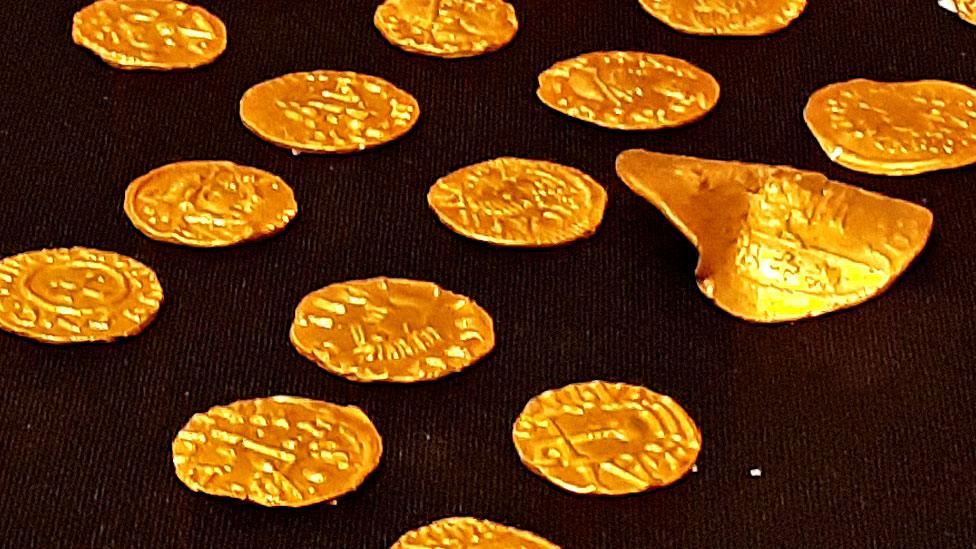St Margaret of Antioch badge found in Norfolk depicts dragon
- Published
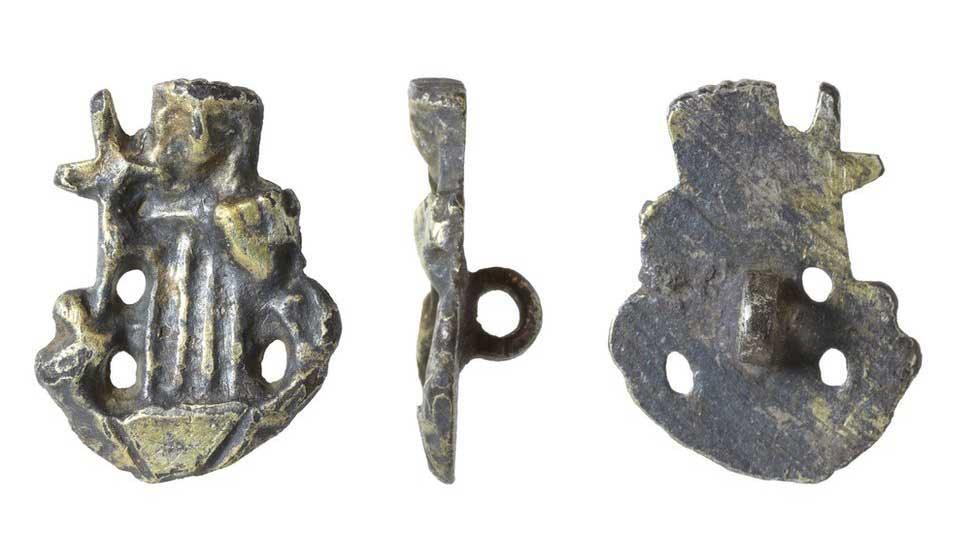
The 11 x 15mm (0.4x0.6in) badge shows St Margaret rising out of the dragon's stomach with her cross going down its throat
A medieval silver badge of allegiance showing St Margaret of Antioch would probably have been owned by a literate, upper class woman, an historian said.
St Margaret was revered as the patron saint of childbirth and pregnant women.
The 15th or 16th Century piece was found at Cawston, Norfolk, external, in September and has been declared treasure, external.
Silver veneration badges usually depict St George and the dragon, making this a "rare and unusual" find, according to Dr Helen Geake.
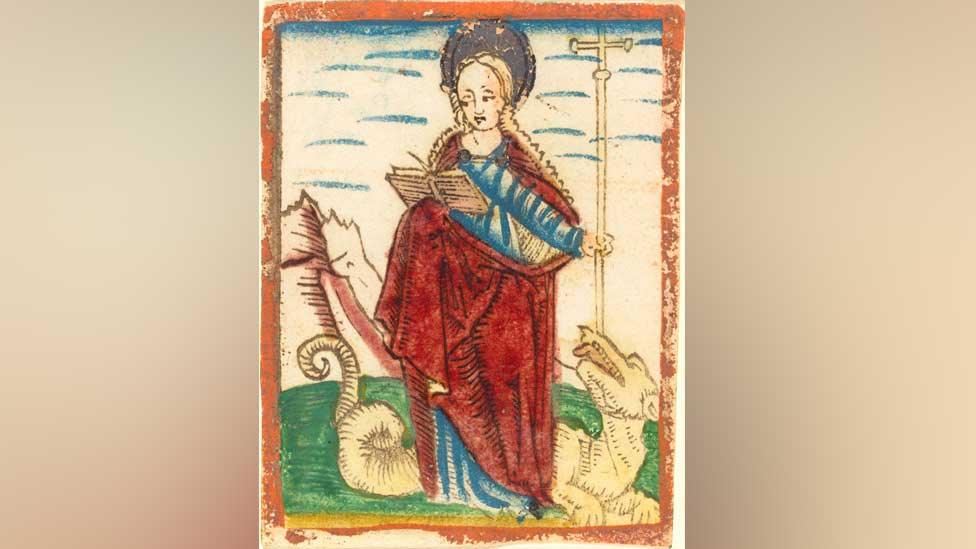
According to her story, she was swallowed by Satan, who appeared as a dragon, but she used her cross to prod him until she burst out of his stomach
The badge was found by a metal detectorist who registered it with the Portable Antiquities Scheme, external.
Dr Geake, Norfolk County Council's finds liaison officer, external, said very few veneration or pilgrim badges were known about in England or Wales before the scheme was set up in 1997, external.
"Even now, there are only about 30 silver ones listed on the scheme so they are quite rare," she said.
She added that this particular one was "extremely posh", having been cast from a cuttlefish bone mould, external which only a "high-class jeweller" would have known how to use.
The 15th or early 16th Century item "must have been made in Norwich, if it didn't come from London".

The story of St Margaret of Antioch
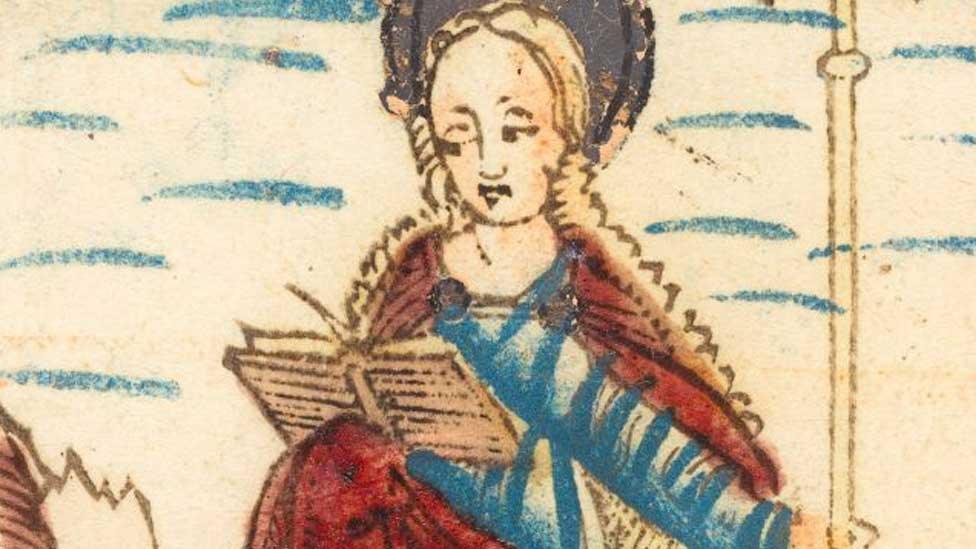
The cult of St Margaret of Antioch was popular in the Middle Ages
Antioch is in modern-day Turkey, external, close to its border with Syria
The saint was revered as a virgin martyr who was tortured and killed by the Romans in AD304 for refusing to give up her faith
She apparently survived being swallowed whole by Satan, who was in the form of a dragon
As she was "birthed" from the dragon's insides, she became the patron saint of childbirth
Unlike St Margaret of Scotland, external, she probably never existed, external, historians say

An Augustinian friar from Clare Priory in Suffolk, external wrote an account of St Margaret's life in his 1440s Legendys of Hooly Wummen for the East Anglian gentry, and she was depicted on church screens across the region.
Dr Geake said: "So the general picture I'm getting of its owners is of literate, upper-class women who read books, wear silver jewellery and donate to fund the painting of rood screens - very much like the Pastons."
The Pastons were a rising 15th Century Norfolk family who left a series of letters behind charting their lives.
As there was no evidence of anyone going on a pilgrimage to Antioch and bringing the item back, Dr Geake believed it was more likely to be "a badge of veneration".
Norwich Castle Museum, external was hoping to add it to its collection.

Find BBC News: East of England on Facebook, external, Instagram, external and Twitter, external. If you have a story suggestion email eastofenglandnews@bbc.co.uk, external
- Published13 April 2022
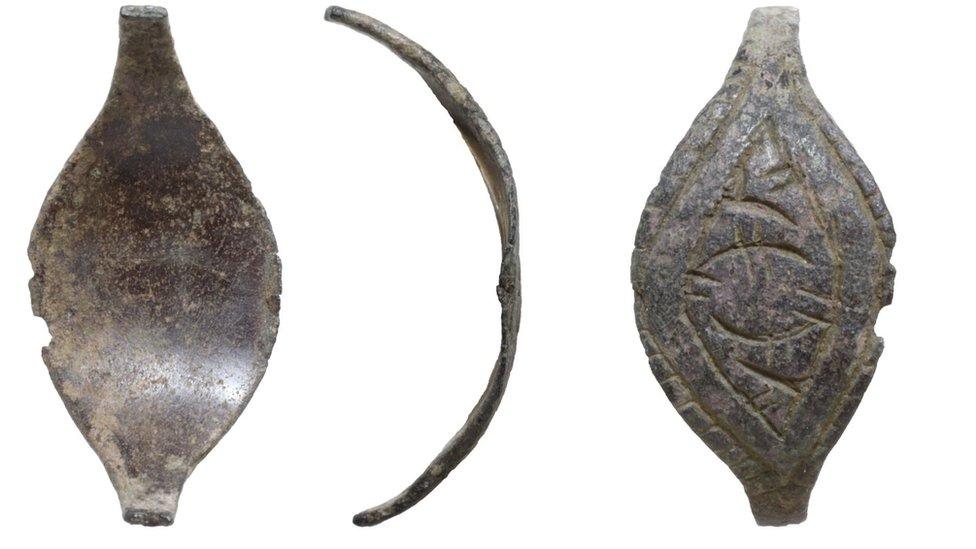
- Published5 March 2022
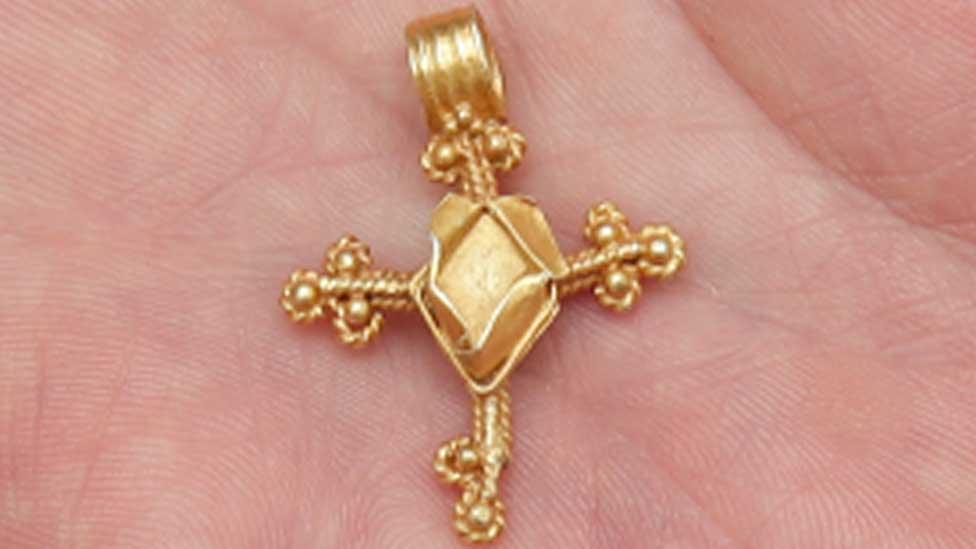
- Published27 June 2021

- Published28 December 2021
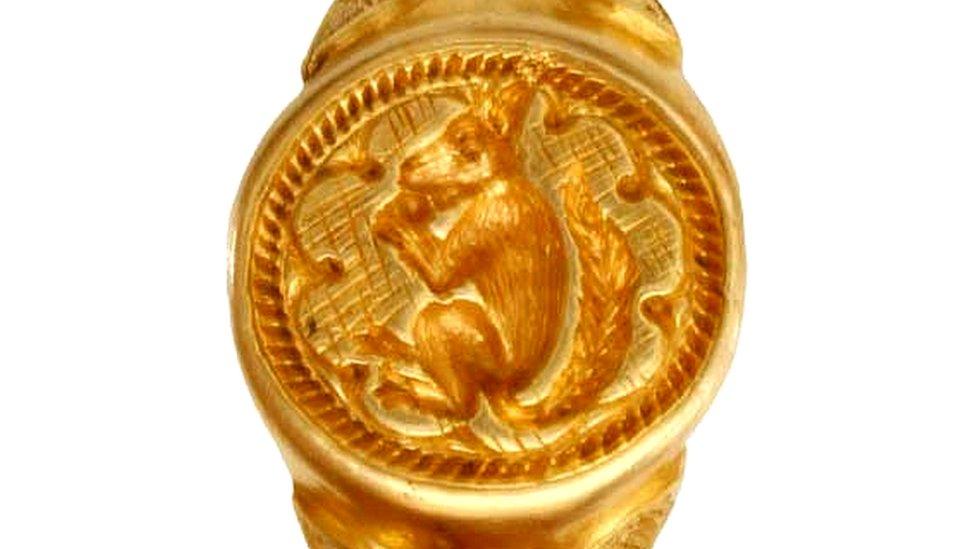
- Published3 November 2021
